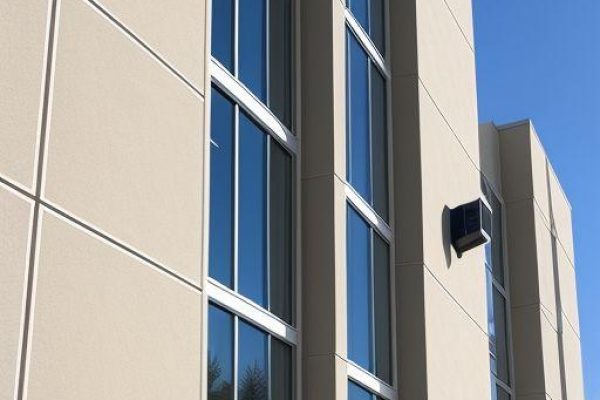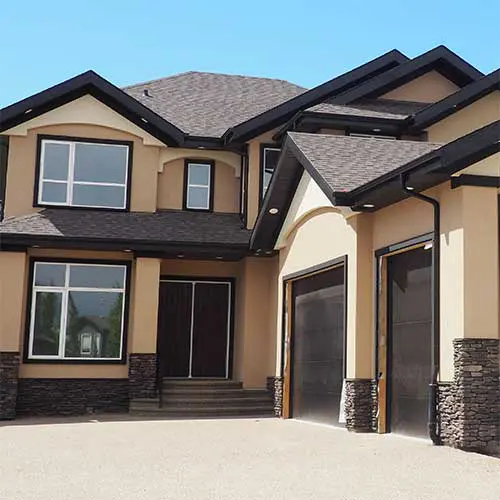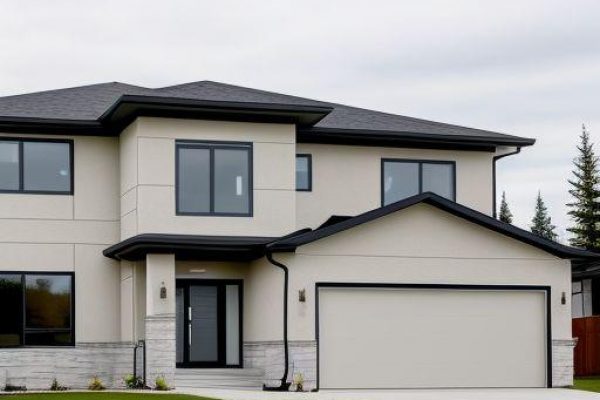
Painting EIFS Stucco: Techniques and Tips for a Lasting Finish
Introduction
When it comes to exterior finishes, EIFS stucco stands out as a popular choice due to its versatility and aesthetics. This synthetic stucco system, known as Exterior Insulation and Finish System, not only enhances the curb appeal of your home but also provides excellent insulation benefits. However, like any other surface, it requires maintenance and periodic painting to keep it looking fresh and vibrant. In this comprehensive guide, we will explore various techniques and tips for painting EIFS stucco effectively. Whether you are a DIY enthusiast or considering hiring professionals for EIFS stucco repair near me, this article will equip you with knowledge to ensure a lasting finish.

Understanding EIFS Stucco
What is EIFS?
EIFS, an abbreviation for Exterior Insulation and Finish System, is a multi-layered building exterior wall system that provides both insulation and weather resistance. Constructed from polystyrene foam board insulation covered with a weather-resistant barrier, it is topped off with a textured finish coat that mimics traditional stucco.
Benefits of EIFS
Preparing to Paint EIFS Stucco
Assessing the Condition of Your EIFS
Before diving into painting, it’s crucial to evaluate the condition of your existing EIFS stucco. Look for cracks, peeling paint, or water damage that could compromise the integrity of the paint job.


Signs You Need Repair
- Visible cracks in the surface
- Peeling or flaking paint
- Water stains or discoloration
- Deteriorated corners or seams
Cleaning the Surface
A clean surface ensures better adhesion of paint. Use a pressure washer to remove dirt, mold, mildew, and any loose material from the stucco's surface.
Cleaning Steps:
Choosing the Right Paint for EIFS Stucco
Types of Paint Suitable for EIFS
Selecting the right kind of paint is paramount in ensuring durability and aesthetic appeal. Here are some suitable options:
dependexteriors.comFactors to Consider When Choosing Paint
- Color Selection: Lighter colors reflect sunlight better than darker shades.
- Durability: Ensure that the paint can withstand harsh weather conditions.
- Finish Type: Matte finishes can hide imperfections while gloss finishes are easier to clean.
Painting Techniques for EIFS Stucco
Essential Tools You'll Need
Before getting started, gather all necessary tools:
- Paint roller with an extension pole
- High-quality brushes
- Painter’s tape
- Pressure washer
- Drop cloths
Step-by-Step Guide on Painting EIFS Stucco
1. Prepare Your Work Area
Lay down drop cloths around your work area to protect landscaping and walkways from paint splatter.
2. Mask Off Areas
Use painter’s tape around windows, doors, and other areas where you don’t want paint to go.
3. Prime if Necessary
If your stucco has never been painted before or if you’re making significant color changes, applying a primer can help improve coverage.
4. Start Painting
Using your roller, apply paint in sections starting from the top downwards; this prevents drips from marring finished areas below.
5. Use Brushes for Detail Work
For corners or intricate details where rollers can't reach effectively, use high-quality brushes.
6. Apply Multiple Coats
Depending on color change or texture level desired; more coats may be necessary for full coverage.
Drying Time Between Coats
Allow adequate drying time between coats—generally about four hours depending on environmental conditions—to achieve optimal results.
Post-Painting Care
After you've completed painting your EIFS stucco surface:
Inspect Your Work
Once dry, inspect every inch of painted area for touch-ups needed.
Clean Up
Remove painter’s tape carefully before the paint fully cures (usually within 24 hours) to avoid peeling edges.
Maintenance Tips
To maintain your newly painted surface:
- Regularly wash it down with mild soap and water.
- Inspect periodically for signs of wear or damage needing attention.
Common Mistakes When Painting EIFS
Skipping Preparation Steps
One common mistake homeowners make is neglecting proper surface preparation before painting which leads to poor adhesion.
Using Incorrect Paint Types
Using oil-based paints can cause cracking on flexible surfaces like EIFS; always stick with latex acrylic options designed specifically for such materials!
FAQs About Painting EIFS Stucco
Q1: How often should I repaint my EIFS stucco?
Repainting every five to ten years is usually advisable depending on local weather conditions affecting wear on surfaces.
Q2: Can I paint over old painted surfaces?
Yes! However thorough cleaning followed by potential priming may be necessary before applying new layers effectively!
Q3: How do I fix cracks in my EIFS before painting?
Utilize an appropriate elastomeric sealant specifically designed for exterior applications around cracks prior applying any coats!
Q4: Is professional help required when dealing with large areas?
If uncomfortable tackling extensive projects alone hiring professionals specializing in "EIFS stucco repair near me" could safeguard quality assurance!
Q5: What should I do if I notice peeling after painting?
Peeling indicates improper application possibly due moisture exposure; remove affected areas back down until solid layer remains & repeat process correctly afterward!
Q6: Are there eco-friendly options available?
Absolutely! Look out eco-friendly paints formulated without harmful volatile organic compounds (VOCs) while providing durable finishes too!
Conclusion
In conclusion, painting EIFS stucco isn’t just about aesthetics; it's about preserving your investment while enhancing energy efficiency at home! Proper preparation paired with quality products ensures long-lasting results worthy enough showcasing! So whether you're choosing DIY or enlisting experts from “EIFS stucco repair near me,” remember these techniques & tips outlined throughout this guide—for that iconic lasting finish everyone admires! Happy painting!